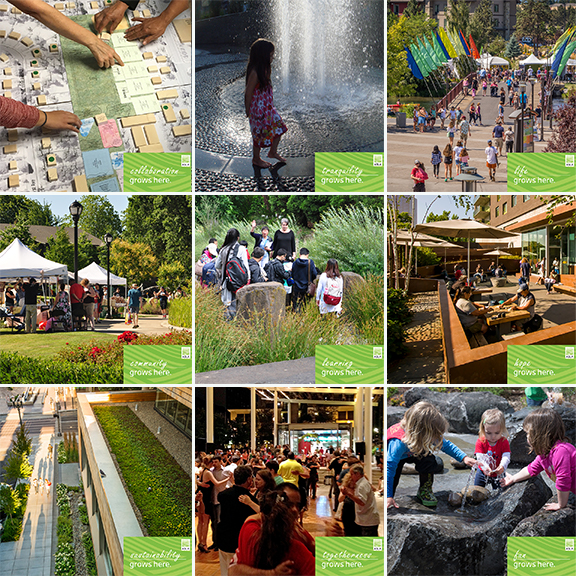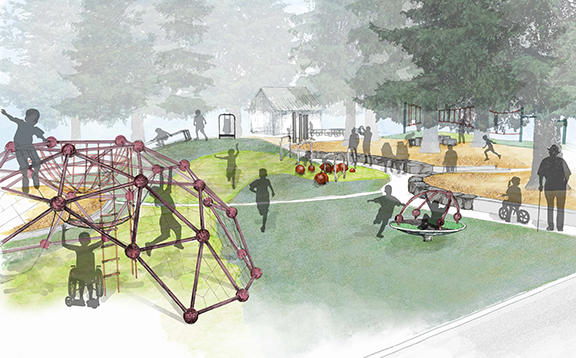World Landscape Architecture Month is an international celebration in April showcasing the ways that life grows in the spaces landscape architects create.
Landscape Architecture Month:
Reflections From Within
In the face of this unprecedented novel coronavirus crisis, we all pause for personal reflection. As designers of the built environment, we are also considering the perplexing social distancing adaptations that require a rationing of physical space. We’re all being asked to analyze the potential consequences of our individual actions at a microscale. We’re also thinking at a macroscale of effects across the country and globe, which is difficult to fathom.
We witness many people turning to parks and open spaces for solace, mental health and nature, as well as exercise routines and recreation. Increasingly, we grasp the value of friendly, walkable neighborhoods and flexible open spaces—places where we can spend time outdoors with our kids, family members and neighbors (at an appropriate distance) during these times of crisis.
We crave optimism and are looking for ways to restore our bodies and souls. We recognize that our connection to nature, sunlight and fresh air is essential to our being. The appropriate levels of engagement and respectful use of outdoor spaces are key. And the need for increased resources deployed to the underserved parts of our community is further underscored—now more apparent than ever.
In walking to a number of neighborhood parks here in Portland throughout the last month, we see diverse people from all walks of life savoring the spring air: couples, elders, multi-generational families, parents with strollers, teens, tweens and solo dog walkers. We study how they consciously populate shared outdoor spaces and (for the most part) demonstrate concern for others. People who pass on walkways and in streets often acknowledge one another in ways we rarely see in urban environments. We nod to porch sitters. Our basic human desire to connect, even with strangers, seems as strong as ever before.
The need for collective awareness and respect for each other is heightened at this time. It’s an opportunity to remind ourselves of the importance of our investment in our parks, access to nature and the public realm. As landscape architects, designers and planners, we must use this time to deepen our understanding of the intrinsic value of parks, walkable streets and public spaces where everyone can feel a sense of belonging. We must redouble our efforts to create spaces that promote the values of equity and inclusion throughout the region. Everyone deserves access to these shared assets that help to define a healed, healthy and re-connected community.
A New Playscape for Creston Park Breaks Ground
 With final design complete, the much anticipated Creston Park playground and pathways project is breaking ground for construction. This beloved park in SE Portland will get upgraded play equipment that is accessible and inclusive, bright and cheerful, and carefully nestled between the existing stand of Douglas firs. New accessible pathways will connect to the playground from the parking lot and Francis Street. We’re looking forward to seeing the neighborhood kids swing, jump, hang, imagine, climb, spin, create and play to their heart’s desire.
With final design complete, the much anticipated Creston Park playground and pathways project is breaking ground for construction. This beloved park in SE Portland will get upgraded play equipment that is accessible and inclusive, bright and cheerful, and carefully nestled between the existing stand of Douglas firs. New accessible pathways will connect to the playground from the parking lot and Francis Street. We’re looking forward to seeing the neighborhood kids swing, jump, hang, imagine, climb, spin, create and play to their heart’s desire.
Unprecedented Times, COVID-19
We remain committed to our clients and business continuity as we work remotely. We are focused on delivering services with the dependability and quality that you’ve come to expect from Mayer/Reed while we protect the health of our community.
